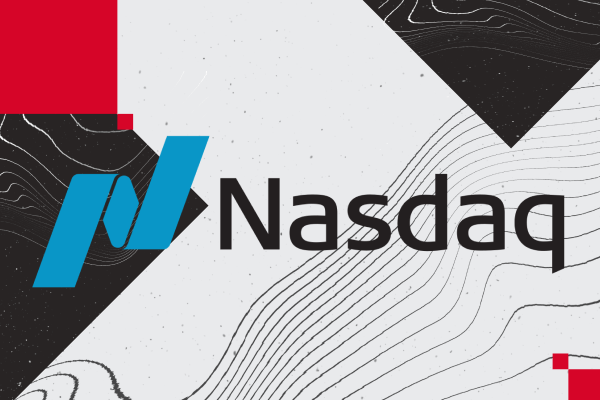Trading Signals 05/02 – 09/02
Unveiling NASDAQ: The Powerhouse of Tech Trading

The Genesis of NASDAQ
In the dynamic world of financial markets, the year 1971 stands out as a watershed moment. This was the year when the National Association of Securities Dealers Automated Quotations, better known as NASDAQ, made its debut. This innovative concept was the brainchild of the Financial Industry Regulatory Authority (FINRA), formerly known as the National Association of Securities Dealers (NASD). NASDAQ was a game-changer, a disruptor that challenged the status quo by becoming the world’s first electronic stock market. This was a revolutionary concept that transformed the financial landscape, making trading more efficient and accessible.
The Evolution of NASDAQ
NASDAQ’s journey from an automated quotation system to a full-fledged trading platform is a testament to its innovative spirit and relentless pursuit of excellence. In the 1980s, NASDAQ introduced a slew of systems that revolutionized trading. These systems allowed traders to conduct transactions seamlessly, thereby enhancing the efficiency of the market. This period of innovation led to the emergence of two key segments: the NASDAQ National Market, catering to the most liquid stocks from large corporations, and the Small Cap Market, a platform for smaller firms with lower market capitalization. Today, NASDAQ is the second-largest stock exchange globally by market capitalization, surpassed only by the NYSE.
The Tech Haven
Over the years, NASDAQ has carved a niche for itself as the preferred listing destination for technology companies. Tech behemoths like Apple, Google, Microsoft, Oracle, Intel, and Amazon chose NASDAQ as their home, making it synonymous with technology stocks. But NASDAQ’s portfolio is not just limited to tech. It is a diverse marketplace that houses stocks from various sectors, including finance, industry, telecom, pharma, and more. This diversity is a reflection of NASDAQ’s commitment to providing a comprehensive platform for investors. As of the second quarter of 2023, the NASDAQ Composite Index stands at 13,037.70 USD, with a year-to-date return of 24.47%.
The Indices
NASDAQ’s indices are a reflection of its diverse portfolio. The Nasdaq Composite Index, the Nasdaq National Market Composite index, and the Nasdaq-100 Index are some of the key indices that investors and market watchers keenly follow. These indices provide a snapshot of the market’s performance, helping investors make informed decisions. They are a testament to NASDAQ’s commitment to transparency and investor empowerment. The NASDAQ-100, a subset of the Composite, comprises the 100 largest non-financial companies, making it a popular index for investors looking to tap into the tech sector’s dynamism.
The Listing Criteria
Earning a spot on NASDAQ is no small feat. Companies must meet several stringent requirements, including registration with the U.S. Securities and Exchange Commission (SEC), meeting minimum capital and shareholder requirements, and having multiple broker market makers. This rigorous process ensures that only the most credible and financially sound companies make it to NASDAQ, thereby protecting the interests of investors. The P/E ratio of the NASDAQ Composite Index stands at 36.54, indicating a high level of investor confidence.
Trading Nuances on NASDAQ
Trading on NASDAQ comes with its unique set of nuances. Unlike traditional exchanges, NASDAQ operates as a dealer’s market, where multiple market makers compete to offer the best bid and ask prices. This structure fosters a competitive and efficient trading environment. Moreover, NASDAQ’s electronic nature allows for rapid execution of trades, which is a boon for traders employing high-frequency strategies. However, it’s crucial for traders to stay abreast of market trends and fluctuations, as tech stocks, which dominate NASDAQ, can be particularly volatile.
Current Market Dynamics
Leading the pack in terms of turnover are several tech giants, indicating high trading activity. Tesla tops the list with an average turnover of $27,105.92 million, followed closely by NVIDIA at $11,833.93 million. Other notable mentions include Apple with a turnover of $9,716.15 million, Microsoft at $8,356.65 million, and Amazon.com at $6,769.57 million. Advanced Micro Devices, Meta Platforms, Alphabet (both Class C and A), and Netflix also feature in the top ten, each with turnovers in the multi-billion dollar range.
Top Dividend Yield Stocks
For income-focused investors, stocks with high dividend yields present attractive opportunities. Third Coast Bancshares leads this category with a staggering dividend yield of 203.97% for the last four quarters. Grindrod Shipping Holdings follows with a yield of 78.04%, and DallasNews comes in third at 56.02%. ClearOne and Icahn Enterprises round out the top five, offering yields of 45.25% and 38.74% respectively.
Significant Price Movements
In terms of price changes, several stocks have shown significant volatility. DHC Acquisition’s warrant has seen a substantial increase of 195.57%, with Cartica Acquisition’s warrant not far behind at 178.88%. On the flip side, Zimmer Energy Transition Acquisition’s warrant has experienced a decrease of 65.52%, while Saverone’s and Signal Hill Acquisition’s warrants have also seen significant drops of 59.63% and 59.09% respectively.
Investment Strategies
When it comes to investment strategies, both long-term and short-term approaches have their merits. For long-term investments, Apple, Microsoft, and Amazon are solid choices. These companies have consistently demonstrated strong performance and have a robust market presence.
For short-term investments, Alphabet, Costco Wholesale, and AstraZeneca are worth considering. These companies have shown promising upside potential, making them suitable for investors looking to capitalize on short-term market fluctuations.
Wrap-Up
The NASDAQ market continues to be a hub of activity, with stocks from various sectors showing significant movements. Investors are advised to keep a close eye on these dynamics to make informed investment decisions. Please note that the stock market is highly volatile, and past performance is not indicative of future results. Always do your own research and consult with a financial advisor before making any investment decisions.
Oil: A Review of Early 2024
China’s Economy: Early 2024
Simple Strategy for Beginner Traders

